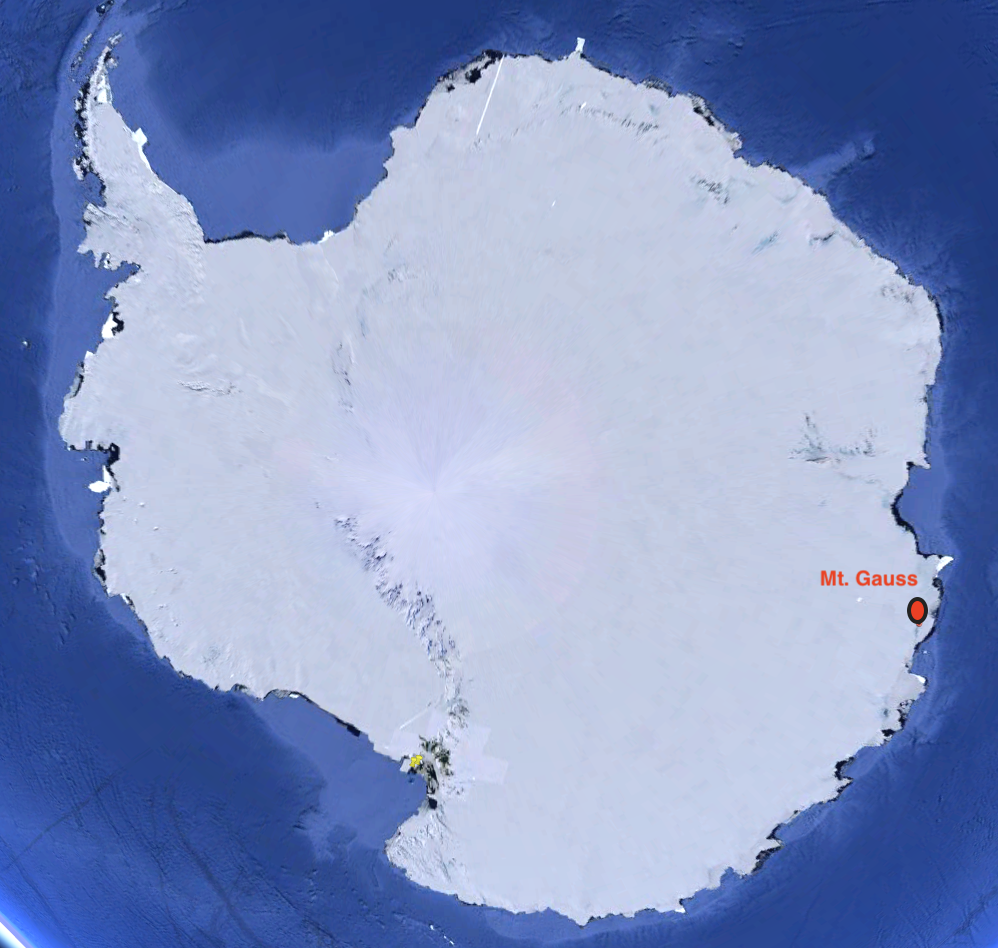
Mount Gauss (or Gaussberg) is an extinct volcanic cone in Kaiser Wilhelm II Land in Antarctica, thought to have been formed about 55,000 years ago. At a height of 370 metres (1,214 ft) it was discovered in February 1902 by the German Antarctic Expedition led by Erich von Drygalski, who named it after his expedition ship, the Gauss, which in turn was named in honour of Carl Friedrich Gauss (German mathematician and physicist).
Mt. Erebus is the only active above ground volcano in Antarctica but there are a number of extinct ones, like Mount Gauss and dormant ones like Mt. Sidley (Antarctica’s highest volcano).
Gaussberg (at 90° E) is the only volcano that occurs along the entire coast of East Antarctica, compared to West Antarctica where there is a huge amount of volcanic activity (much of it below the ice cap).

